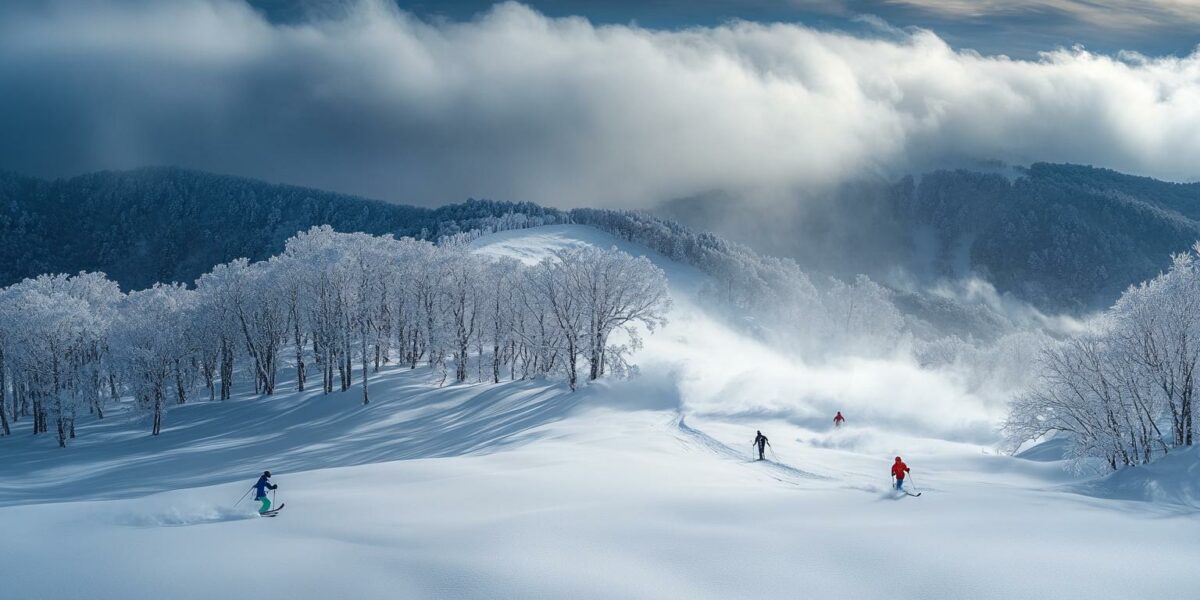Hokkaido’s Powder Snow Faces Threat from Climate Change
Hokkaido, renowned for its light and fluffy powder snow, is facing a significant threat from global warming. A recent study suggests that this unique snow could become heavier and wetter, altering both the region’s tourism appeal and everyday life in the area.
The research team from Hokkaido University and the Japan Meteorological Agency found that if the global average temperature increases by four degrees from pre-industrial levels, the snow in Hokkaido could resemble the “wet” snow found in Honshu.
Currently, global temperatures are around two degrees higher than the 1900 average. This trend raises concerns about the feasibility of reversing or even stabilizing these temperature increases.
The study, published in the Journal of Applied Meteorology and Climatology, examined snowflake compositions in Hokkaido and Honshu, revealing significant differences due to temperature variations.
The Science Behind the Snow’s Transformation
Snowflakes in Hokkaido’s colder atmosphere absorb water vapor, forming shapes like needles, plates, or dendrites. These delicate structures result in the smoother, lighter snow that the region is famous for.
In contrast, Honshu’s snowflakes often attract rime, a coating of frozen water droplets, making them heavier and more like soft hail. This fundamental difference highlights the potential changes Hokkaido may face.
The academic study concluded that future precipitation in Hokkaido might shift towards liquid rather than solid forms, echoing conditions seen in the temperate zones of Honshu.
According to the researchers, the riming process will become more dominant in Hokkaido, significantly altering the snow quality and impacting winter sports and daily life.
Implications for Tourism and Daily Life
Powder snow is ideal for winter sports, providing a smooth surface for skiers and snowboarders and making falls less severe. The shift to heavier snow could have widespread consequences for the region’s tourism industry.
Yousuke Sato, an associate professor of meteorology, emphasized the need to reconsider tourism strategies if the snow quality changes. He noted that heavier snow would also affect daily activities like snow clearing.
Paul Butkovich, director of real estate sales at the H2 Group, pointed out that any decline in snow quality would be detrimental to the snow sports industry and related businesses.
Despite concerns, Butkovich believes that ski resorts will adapt by promoting themselves as year-round destinations, offering a broader range of activities beyond winter sports.
Future Prospects and Industry Adaptation
Butkovich also downplayed fears of completely losing high-quality powder snow. He stated that while the window for optimal conditions might shrink, Hokkaido would still receive significant snowfall annually.
However, he acknowledged that the peak powder season would become shorter, affecting the overall experience for winter sports enthusiasts.
The ski resorts in Hokkaido and other popular winter sports destinations will need to adapt to changing climatic conditions to sustain their tourism appeal.
As global warming continues to pose challenges, the focus will likely shift towards transforming these destinations into all-season attractions.



Chase8
Oh no, I was planning a trip there next winter! Hope it won’t be too bad.
evan
Interesting read! Are there any other regions facing similar issues?
Aubrey
Climate change is really messing up everything. We need stricter policies now!
MackenzieAmethyst
More reason to visit Hokkaido before it’s too late lol
ianwanderer
Great article! But what about other winter sports, will they be impacted too?
AmeliaCitadel
So does this mean skiing in Hokkaido won’t be as fun in the future?
caroline
Thanks for sharing this, it’s important to stay informed about such issues.
Abigail
Man, this sucks! Hokkaido’s powder snow is legendary. 😢
Claire7
Wow, this is really concerning. How can we help combat this climate change issue?